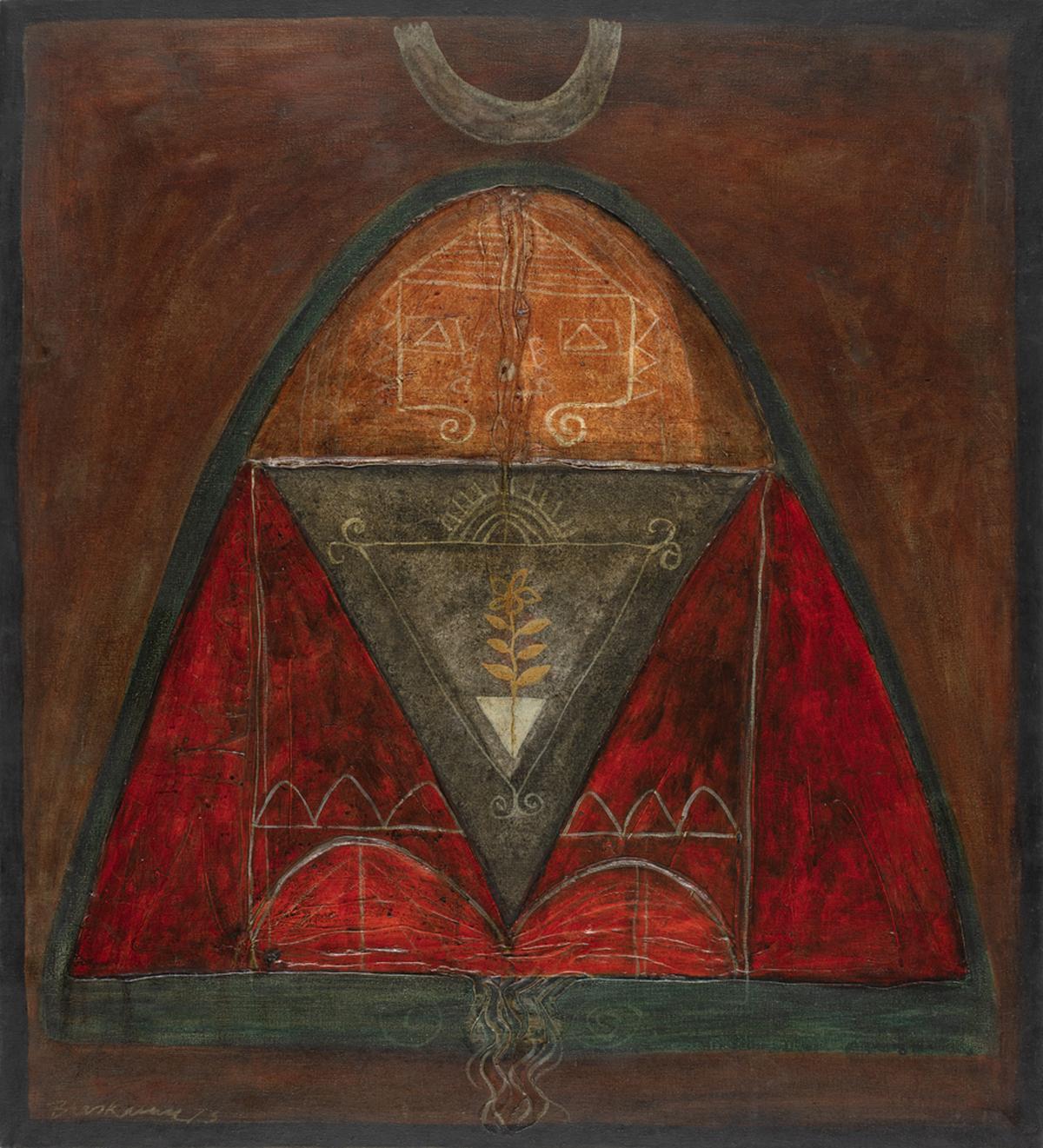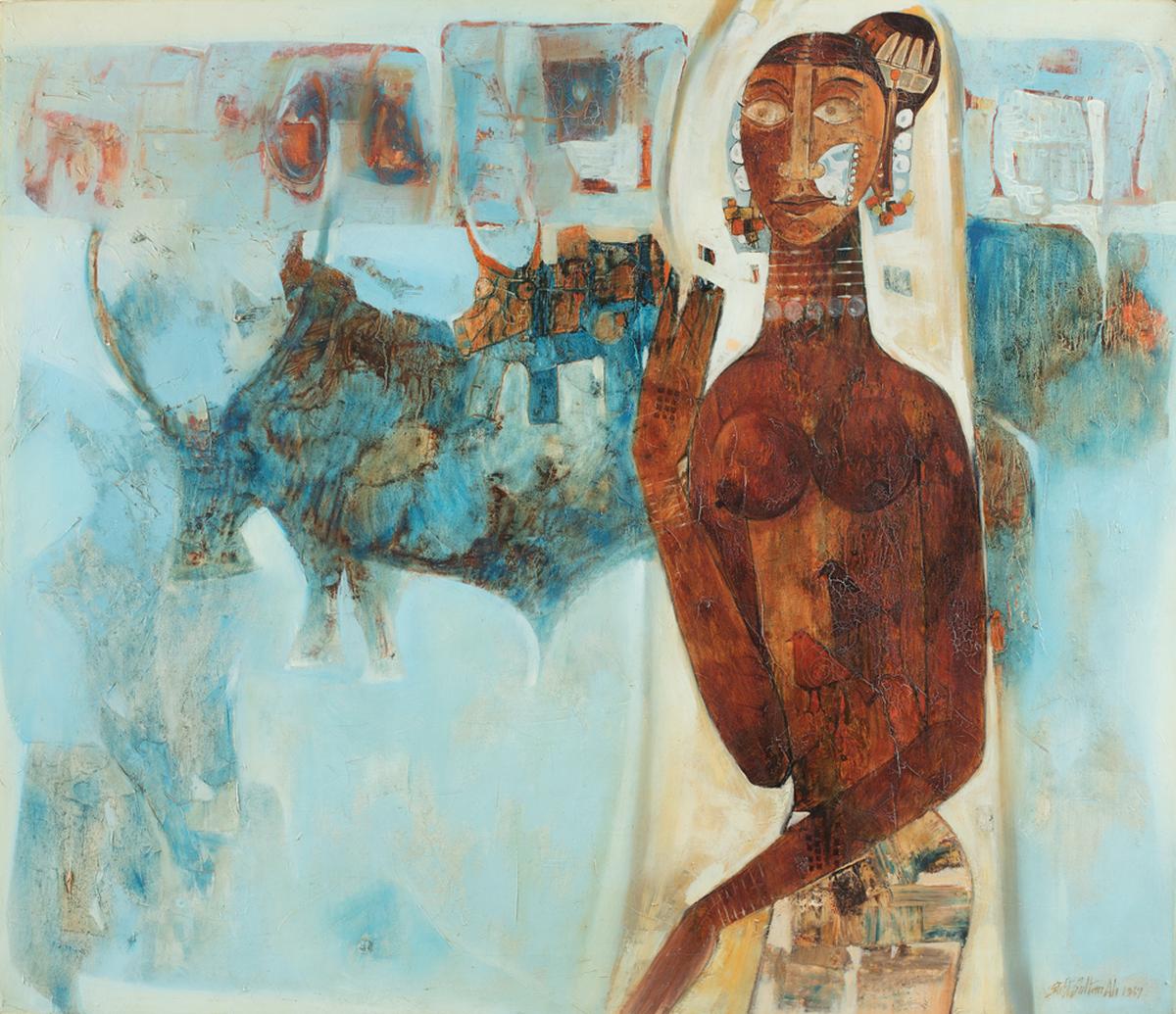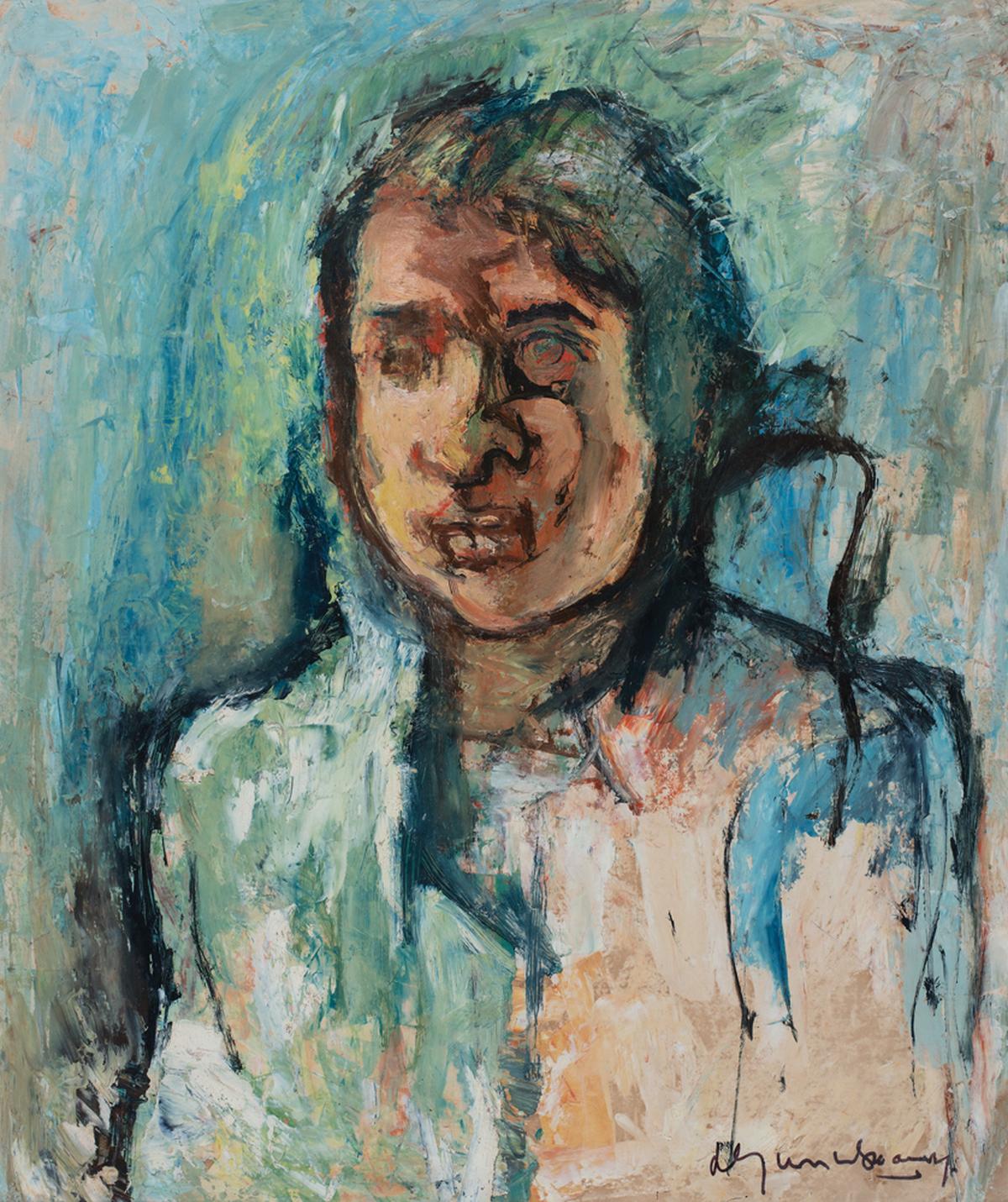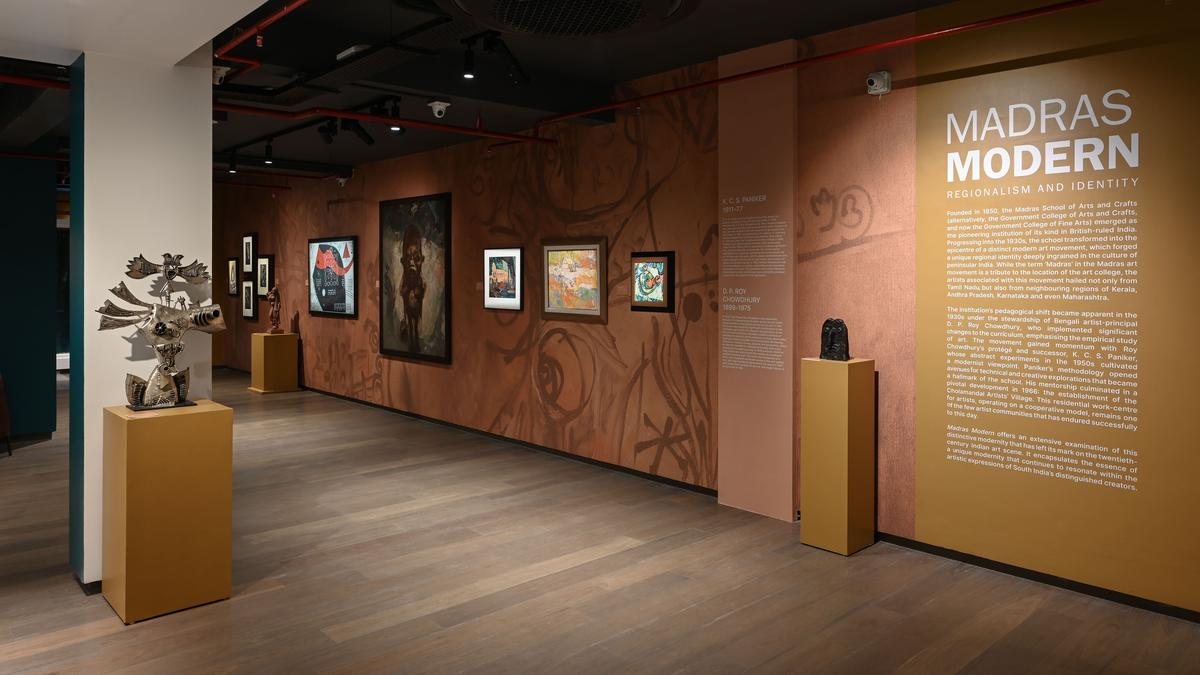An inside view of the exhibition at DAG, New Delhi | Photo courtesy: Special Arrangement
It is a huge task to encompass within the confines of a gallery an art movement spanning decades and ideologies, which gave a new visual language to modernism in India. In the second edition of Madras Modern: Regionalism and Identity at Delhi’s DAG, the canvases offer a bird’s eye view of a practice that was proud of its Indianness. They reveal a lot about a modernist movement that originated in south India, particularly the then Madras.

Artwork created by RB Bhaskaran | Photo Credit: Special Arrangement
The Madras Art Movement of the 1960s, whose faint traces can still be seen in Chennai’s isolated and now transformed Cholamandal artists’ village, was a defining moment in South India’s art history, with its roots firmly planted in the picturesque campus of the Government College of Fine Arts, Egmore.

Under the watchful and guiding gaze of artist-teacher KCS Paniker, this movement sought to reject the omnipresent colonial gaze and find a new language that was entirely Indian, largely drawn from the cultural heritage of the region. From DP Roy Choudhury’s unrivalled command over shadow and light, and his student Paniker’s innovative use of text, lines and striking colours to L Munuswamy’s more modern language of abstraction and Dakshinamoorthy’s intricate sculptures, Madras Modern has attempted to showcase facets of a movement through this two-part exhibition.

Artwork by J Sultan Ali | Photo Credit: Special Arrangement
“The first exhibition took place in Bombay in 2019. Usually, we take a historical perspective of such movements, whether it is the Bengal School, Shantiniketan or Bombay Progressives. It was instinctive for us to try and include all parts of history that are central to the Madras art movement,” says Ashok Singh, senior vice-president of DAG, who was also involved in the curation of this show. Though slightly more edited than before, the artists on display remain the same. “A large part of it comes from DAG’s own list, and where we couldn’t fill the gap was the voices of women,” says Ashok. The book, published along with the first edition, was written by Ashrafi S Bhagat and gives a comprehensive explanation of the movement and how it influenced contemporary art in India,
Setting the Context
Ashok says that historically recognising such a huge movement is important for curation. “We started with Paniker initially, but that doesn’t give a clear sense of the history of how the Madras School of Art got this big boost when Roy Choudhury rejuvenated the Visual Arts Department of the Government College of Fine Arts. His teaching brought excellence to a person like Paniker, the artist-teacher. “And later a critic at an exhibition in London said, ‘Though the work was excellent, where was India in it?’, that proved to be a trigger point for a change in attitude.

Artwork created by L Munuswamy | Photo Credit: Special Arrangement
“This inspired them to start exploring,” he adds. Having found that pivot, they encouraged fellow artists to make art in new directions. “This led to a clear sense of regionalisation and a focus on the written word, the letter and the line,” says Ashok. They joined forces with artists from different paradigms, including a broad range of sculptural practice, he adds. The curation also looked at form and how the immediate environment in and around the Cholamandal Artists Village shaped the form of the work and made it more local. “Then there are abstractionists like C Douglas,” says Ashok. Later artists (some are descendants of pioneers like Panikkar’s son S Nandagopal) have carried this legacy forward through a more contemporary language and have also made their presence felt in the collection.
“The foundation of the movement was so strong that every artist was able to find something to carry forward. And that is the best form of legacy,” says Ashok.
Madras Modern: Regionalism and Identity is on display at DAG, New Delhi till July 6.
